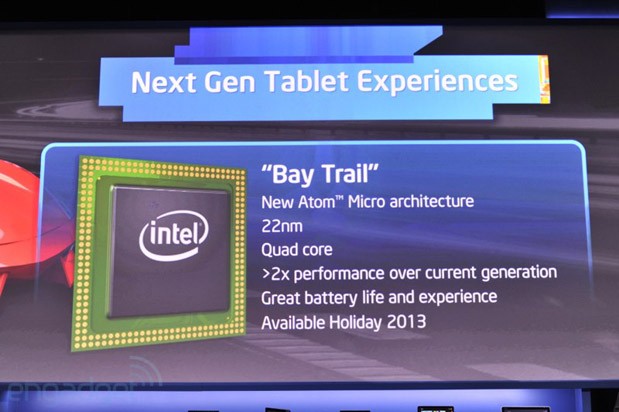After a long period of time when they were seen as the greedy battery eaters of all chip producers, Intel decided to get rid of that image and come out with an energy efficient chip. They were behind the ARM chips and their power efficient architectures, but no more, as proved by an Intel engineer who recently visited AnandTech.
He brought with him two top notch devices, the Dell XPS 10 tablet based on Qualcomm Snapdragon S4 dual core CPU (28 nm) and the Nexus 10 Cortex A15 Exynos dual core chipset slate (32 nm). Those two models were compared with Intel’s own Atom Z2760. The Atom is clearly faster than Krait, which is an interesting statement, since Atom is 5 years old, but the really cool thing is that the two are pretty much the same when it comes to power use. Intel will refresh its Atom chip lineup with a new 22 nm core in about a year, so things will get juicy then.
When compared to the Cortex A15 the Intel Atom lost in performance battles, but the A15 is a power hungry beast apparently, that on smartphones wouldn’t be of any use, since it would drain the battery fast. On tablet it kind of makes sense, though… Intel’s Haswell architecture is expected to build up on the decent power consumption image and go as low as 4W when we reach the 10 nm manufacturing area around 2017. Those are revolutionary times, folks!
Post Footer automatically generated by Add Post Footer Plugin for wordpress.














